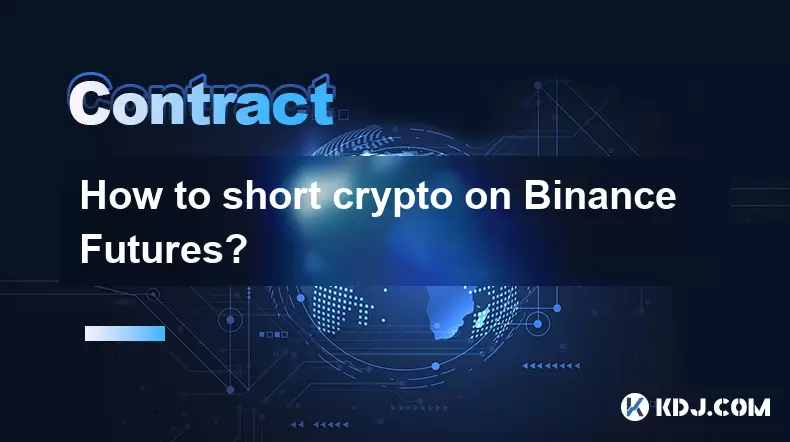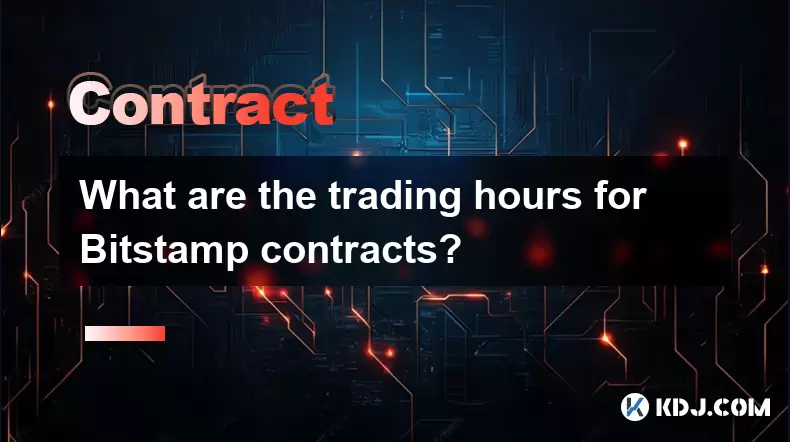-
 Bitcoin
Bitcoin $117500
2.04% -
 Ethereum
Ethereum $3759
3.02% -
 XRP
XRP $3.171
3.30% -
 Tether USDt
Tether USDt $1.000
0.03% -
 BNB
BNB $782.4
2.52% -
 Solana
Solana $187.2
5.62% -
 USDC
USDC $0.0000
0.02% -
 Dogecoin
Dogecoin $0.2380
5.26% -
 TRON
TRON $0.3175
1.07% -
 Cardano
Cardano $0.8227
4.03% -
 Hyperliquid
Hyperliquid $44.50
5.44% -
 Sui
Sui $4.020
10.07% -
 Stellar
Stellar $0.4396
6.28% -
 Chainlink
Chainlink $18.32
4.55% -
 Hedera
Hedera $0.2628
10.71% -
 Bitcoin Cash
Bitcoin Cash $554.8
4.90% -
 Avalanche
Avalanche $24.20
4.60% -
 Litecoin
Litecoin $113.7
2.31% -
 Shiba Inu
Shiba Inu $0.00001413
5.99% -
 UNUS SED LEO
UNUS SED LEO $8.984
0.11% -
 Toncoin
Toncoin $3.326
7.22% -
 Ethena USDe
Ethena USDe $1.001
0.00% -
 Uniswap
Uniswap $10.49
4.56% -
 Polkadot
Polkadot $4.092
4.02% -
 Monero
Monero $326.6
1.30% -
 Dai
Dai $1.000
-0.01% -
 Bitget Token
Bitget Token $4.570
2.49% -
 Pepe
Pepe $0.00001267
5.10% -
 Aave
Aave $297.3
3.10% -
 Cronos
Cronos $0.1344
4.10%
How to short crypto on Binance Futures?
Shorting crypto on Binance Futures lets you profit from falling prices, but use caution—high leverage increases risk of liquidation in volatile markets.
Jul 26, 2025 at 11:57 am

Understanding Short Selling in Crypto Futures
Short selling in crypto futures allows traders to profit from falling prices. When you short a cryptocurrency on Binance Futures, you're essentially borrowing the asset (in this case, a futures contract) and selling it immediately, with the plan to buy it back later at a lower price. The difference between the sell and buy price is your profit — if the market moves as expected. It's crucial to understand that shorting involves high risk, especially in volatile markets like crypto, where prices can swing dramatically in a short time.
Setting Up Your Binance Futures Account
Before you can short any cryptocurrency, ensure your Binance Futures account is activated:
- Log in to your Binance account and navigate to the [Futures] tab.
- If prompted, complete the Futures quiz to verify your understanding of leverage and risk.
- Deposit funds into your Futures wallet — this can be done via the [Wallet > Funding Wallet > Transfer] section.
- Choose the asset you want to trade (e.g., BTC/USDT, ETH/USDT) and make sure you have enough margin to cover your position.
Important: Always start with a small position size when learning how to short. Margin requirements vary depending on the leverage used.
Choosing the Right Trading Pair and Leverage
Once in the Futures interface: - Select a trading pair like BTC/USDT or ETH/USDT from the available contracts.
- Decide on your leverage — Binance offers up to 125x for some pairs. For beginners, 5x to 10x is strongly recommended to avoid rapid liquidation.
- Confirm your margin mode: Isolated (risk limited to the allocated margin) or Cross (uses entire wallet balance as collateral).
Note: Higher leverage increases both potential gains and losses. Use leverage cautiously — it directly affects your liquidation price.
Placing a Short Order Step-by-Step
To execute a short position: - Set the order type to Market (executes immediately at current price) or Limit (executes only at your specified price).
- In the Buy/Sell panel, click Sell — this indicates a short position.
- Enter the quantity you want to short (e.g., 0.01 BTC).
- Review the estimated liquidation price — this is the price at which your position will be automatically closed to prevent further losses.
- Click Sell BTC (or your chosen asset) to open the short position.
Critical: Always double-check whether the order type is Sell (short) and not Buy (long). A single mistake can lead to unexpected losses.
Monitoring and Managing Your Short Position
After opening a short: - Track the position in the Positions tab. Here, you’ll see entry price, liquidation price, unrealized P&L, and margin used.
Set a Stop-Loss order to limit losses if the market rises unexpectedly. To do this:
- Go to the Stop-Limit or Stop-Market order type.
- Set a trigger price above your entry (e.g., if you shorted at $60,000, set stop at $62,000).
- Enter the quantity and price at which the stop order should execute.
- Consider setting a Take-Profit order to automatically close the position when your profit target is reached.
Pro Tip: Use Trailing Stop orders to lock in profits if the price drops significantly — it adjusts the stop-loss upward as the price falls.
Closing the Short Position
To close your short: - Navigate to the Positions tab and locate your open short.
- Click Close — this will automatically place a buy order of the same size to offset your short.
- Alternatively, manually place a Buy order for the same quantity to close the position.
- Check your realized P&L in the Order History or Trade History section.
Important: If you don’t close manually, the position remains open until liquidation or you decide to exit. Monitor it closely, especially during high volatility.
Frequently Asked Questions
What happens if my short position gets liquidated?
Liquidation occurs when the market moves against your short and your margin is depleted. Binance automatically closes the position to prevent further losses. You lose the entire margin allocated to that trade. To avoid this, monitor your liquidation price and use stop-loss orders.Can I short crypto without using leverage on Binance Futures?
Yes. You can set leverage to 1x, which means you’re trading with your full margin as collateral — no borrowed funds. This reduces risk but also limits potential profit. It’s ideal for conservative traders testing short strategies.Is shorting crypto on Binance Futures the same as spot shorting?
No. Spot trading on Binance does not allow direct shorting unless you use options or third-party lending platforms. Futures shorting is built into the contract system — you don’t need to borrow the asset manually; the exchange handles it via margin.How do I know if I’ve successfully opened a short position?
Look at the Positions tab. If you see a negative quantity (e.g., -0.01 BTC) and the side says Sell, you’ve opened a short. Also, your unrealized P&L will be positive if the price has dropped since entry.
Disclaimer:info@kdj.com
The information provided is not trading advice. kdj.com does not assume any responsibility for any investments made based on the information provided in this article. Cryptocurrencies are highly volatile and it is highly recommended that you invest with caution after thorough research!
If you believe that the content used on this website infringes your copyright, please contact us immediately (info@kdj.com) and we will delete it promptly.
- Bitcoin Mining Goes Mobile: Apps & Strategies for Earning in 2025
- 2025-07-27 00:50:12
- Solana Roadmap vs. XRP Rivals: Where's the Market Attention?
- 2025-07-27 01:30:13
- Altcoins Primed for a 2025 Takeover: Undervalued Cryptos to Watch
- 2025-07-27 00:50:12
- Blockchain, Stocks, and Gold: A New Era of Financial Integration
- 2025-07-27 00:30:12
- Crypto Gainers: BlockDAG, VeChain (VET), and the Shifting Sands of Altcoins
- 2025-07-27 01:30:13
- Cryptos to Watch in 2025: Top Analysts' Picks and Meme Coin Mania
- 2025-07-27 01:35:12
Related knowledge

Why is my Bitstamp futures position being liquidated?
Jul 23,2025 at 11:08am
Understanding Futures Liquidation on BitstampFutures trading on Bitstamp involves borrowing funds to open leveraged positions, which amplifies both po...

Does Bitstamp offer inverse contracts?
Jul 23,2025 at 01:28pm
Understanding Inverse Contracts in Cryptocurrency TradingIn the realm of cryptocurrency derivatives, inverse contracts are a specific type of futures ...

How to find your Bitstamp futures trade history?
Jul 23,2025 at 08:07am
Understanding Bitstamp and Futures Trading AvailabilityAs of the current state of Bitstamp’s service offerings, it is critical to clarify that Bitstam...

Can I use a trailing stop on Bitstamp futures?
Jul 23,2025 at 01:42pm
Understanding Trailing Stops in Cryptocurrency TradingA trailing stop is a dynamic type of stop-loss order that adjusts automatically as the price of ...

Can I use a trailing stop on Bitstamp futures?
Jul 25,2025 at 02:28am
Understanding Trailing Stops in Cryptocurrency Futures TradingA trailing stop is a dynamic type of stop-loss order that adjusts automatically as the m...

What are the trading hours for Bitstamp contracts?
Jul 24,2025 at 11:56am
Understanding Bitstamp and Contract Trading AvailabilityBitstamp is one of the longest-standing cryptocurrency exchanges, established in 2011 and head...

Why is my Bitstamp futures position being liquidated?
Jul 23,2025 at 11:08am
Understanding Futures Liquidation on BitstampFutures trading on Bitstamp involves borrowing funds to open leveraged positions, which amplifies both po...

Does Bitstamp offer inverse contracts?
Jul 23,2025 at 01:28pm
Understanding Inverse Contracts in Cryptocurrency TradingIn the realm of cryptocurrency derivatives, inverse contracts are a specific type of futures ...

How to find your Bitstamp futures trade history?
Jul 23,2025 at 08:07am
Understanding Bitstamp and Futures Trading AvailabilityAs of the current state of Bitstamp’s service offerings, it is critical to clarify that Bitstam...

Can I use a trailing stop on Bitstamp futures?
Jul 23,2025 at 01:42pm
Understanding Trailing Stops in Cryptocurrency TradingA trailing stop is a dynamic type of stop-loss order that adjusts automatically as the price of ...

Can I use a trailing stop on Bitstamp futures?
Jul 25,2025 at 02:28am
Understanding Trailing Stops in Cryptocurrency Futures TradingA trailing stop is a dynamic type of stop-loss order that adjusts automatically as the m...

What are the trading hours for Bitstamp contracts?
Jul 24,2025 at 11:56am
Understanding Bitstamp and Contract Trading AvailabilityBitstamp is one of the longest-standing cryptocurrency exchanges, established in 2011 and head...
See all articles

























































































